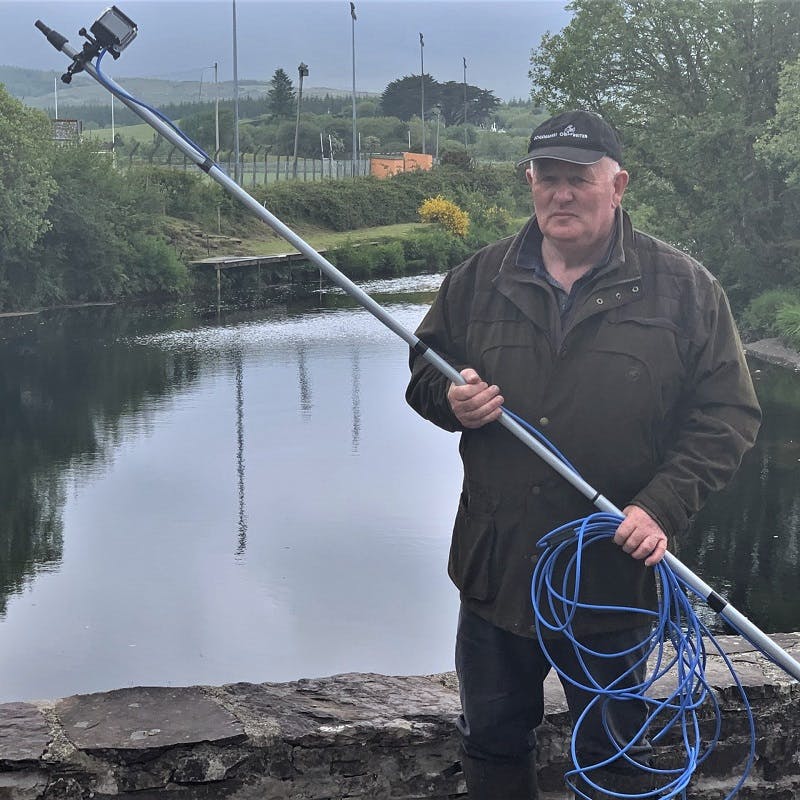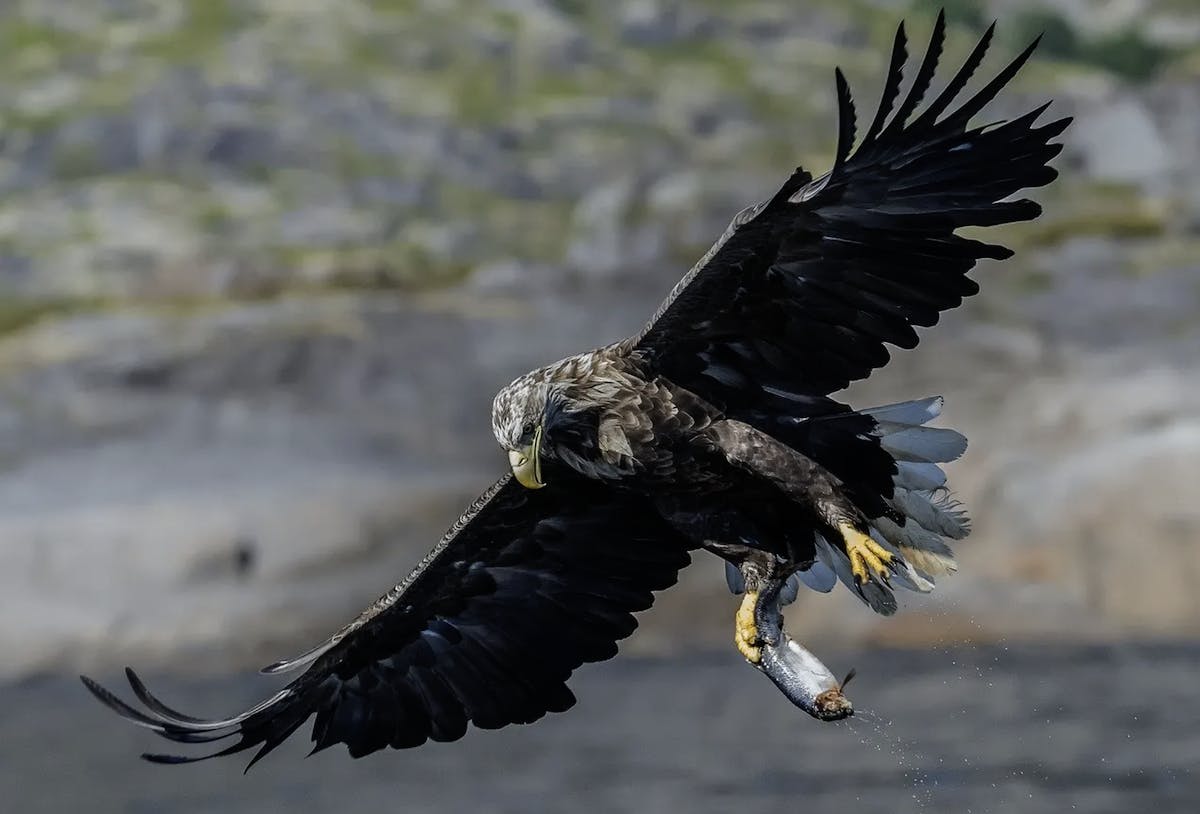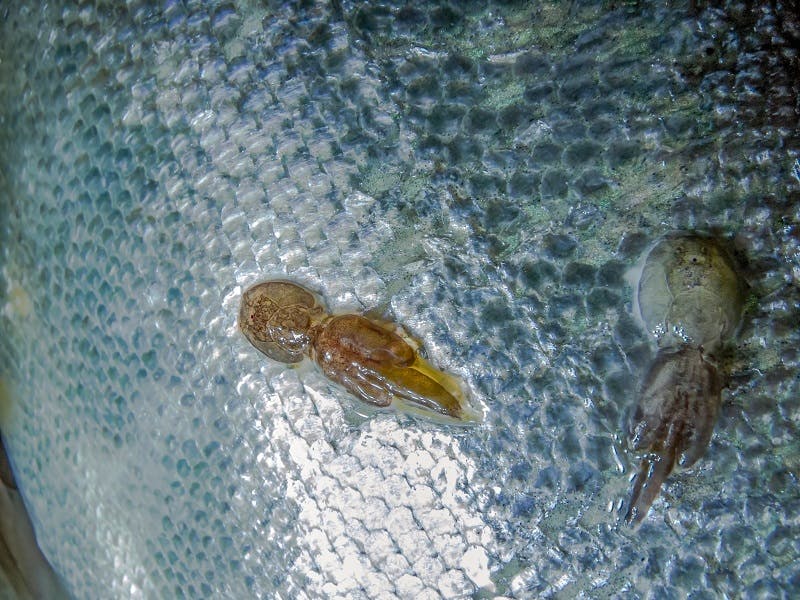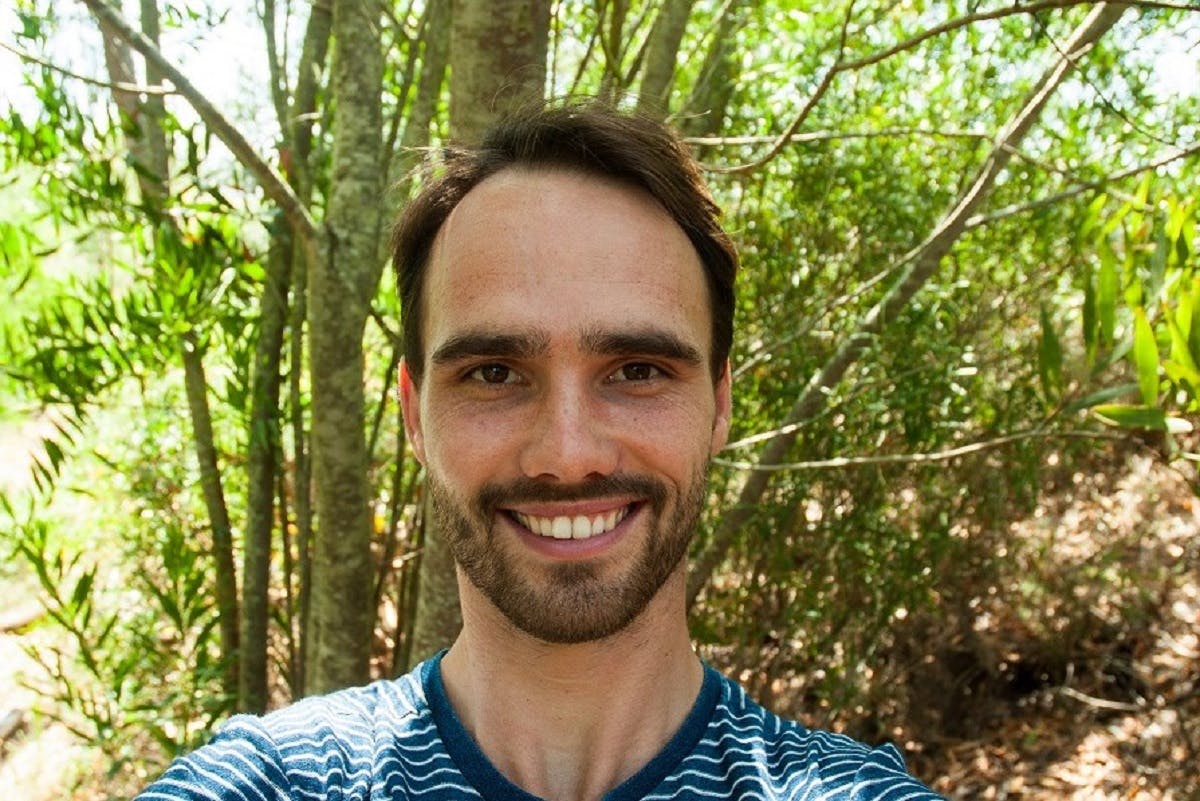- The Intervention
- Learn More About the Context Behind this Project
- Anadromous fish have important ecosystem functions
- But populations have declined
- Underwater video feed
- First Grilse recorded on their migration - July 2021
- Salmon and sea trout migrating under difficult conditions - July 2021
- Evidence of sea lice infested sea trout returning prematurely - June 2021
- Evidence of sea lice infestation - June 2021
- Status: Implemented
Migratory fish such as Atlantic salmon and sea trout play a very important role in their ecosystem but in Ireland, their numbers are a very small fraction of what they once were. One contributor to this sad trend has been the infestation of lice from artificial salmon aquaculture facilities. Sadly, government-led schemes to monitor this issue have been insufficient to tackle the problem so far and much of the impact goes unnoticed. To address this we have partnered with Salmon Watch Ireland on a project to showcase the state of Irish migratory fish populations using an underwater camera. The goal is to increase surveillance where it is lacking and to collect data that can help to address this problem.
Project Timeline
June - July 2021
The setup was tested and we collected the first footage of migrating fish.
The Intervention
Underwater cameras will be used to live stream videos of these rivers so that the condition of migrating fish can be assessed by anyone online. The Camera system utilises Go Pro Hero 9 technology with underwater WiFi extension cabling allowing the footage to be viewed remotely on an overwater monitor. This technology allows the operator to film at the most opportune periods. Initially, the project will focus on four distinct regions in the southwest of Ireland. Two of them are adjacent to aquaculture farms while the other two are not and will provide a simple means of comparison.
Other than making the videos available online, the levels of infestation with sea lice will also be categorised and reported to Inland Fisheries Ireland and the Marine Institute to allow further inspection and research. This should help prioritise coastal areas for environmental DNA sampling and subsequent quantification of sea lice density.
The project is funded through our business membership with Arctic Stone.

Learn More About the Context Behind this Project
Anadromous fish have important ecosystem functions
Atlantic salmon (Salmo salar) and sea trout (Salmo trutta) are anadromous fish. Born in freshwater streams they migrate down to the sea where they feed and grow before migrating back up their natal stream to spawn. By feeding at sea and migrating up Irish rivers they bring nutrients from the marine environment and make them available to inland inhabitants such as Eurasian otters and different birds of prey. Because of this important nutrient transport function, ensuring we have healthy salmonid populations is a way to support the entire ecosystem.

But populations have declined
Unfortunately Atlantic salmon and sea trout populations have been declining in Ireland over the last few decades. One important contributor appears to have been the expansion of artificial salmon aquaculture facilities along the west coast of Ireland. By keeping individuals at high densities these facilities often face problems with sea lice infestations which can spread to adjacent wild fish populations. These parasites feed on the mucus, skin and muscle of the fish and the tissue damage they create leads to physiological stress, a lower feeding rate and a reduced ability to deal with changing water salinity and ultimately can lead to increased mortality. One way sea trout try to cope with this is by migrating to their native rivers prematurely - it is easier for them to cope with freshwater when their skin is damaged and to rid themselves of the lice. This premature return does come with a cost, less time spen feeding at sea means the fish are often small and weak and less capable of making their return journey successfully.
The evidence that sea lice can impact wild salmon populations is also clear. For example, a study published last year shows that salmon in this region are 19 – 46% less likely to return upstream in years with high levels of sea lice in nearby farms.

Underwater video feed
As the project progresses we will keep sharing such videos and start contributing to a more complete picture of the extraordinary journeys of salmonid fish and of the challenges that they are facing due to human activities.
First Grilse recorded on their migration - July 2021
The first Grilse migrating upstream was captured on camera in July 2021. Grilse are young atlantic salmon that are returning to their native rivers for the first time after spending one winter at sea. Note how one individual has been injured by predation.
Salmon and sea trout migrating under difficult conditions - July 2021
On this occasion, John set the camera in a stream with low water levels and elevated temperatures but still detected some juvenile trout and salmon migrating under these difficult circumstances. Salmonids are sensitive to temperature and one of the challenges we face is keeping river temperatures to a level that is suitable to them as the climate warms.
Evidence of sea lice infested sea trout returning prematurely - June 2021
In this video you can see some of the first evidence of heavily infested sea trout captured with the new camera. These fish are about 20 cm and the lesions that are visible on their skin are the result of sea lice tissue damage.
Evidence of sea lice infestation - June 2021
Despite the poor visibility on this one, it is still possible to notice the impact of sea lice. The white patches on the skin indicate the areas where the parasites have caused damage.
Sources & further reading

- “Lice, infectious disease and taking reef fish: The impact of salmon farms on marine biodiversity” - Noteworthy
- “Wild Atlantic salmon exposed to sea lice from aquaculture show reduced marine survival and modified response to ocean climate” - ICES Journal of Marine Science
the team behind the project

Tiago de Zoeten, conservation biologist at Mossy Earth

John Murphy, founder of Salmon Watch Ireland